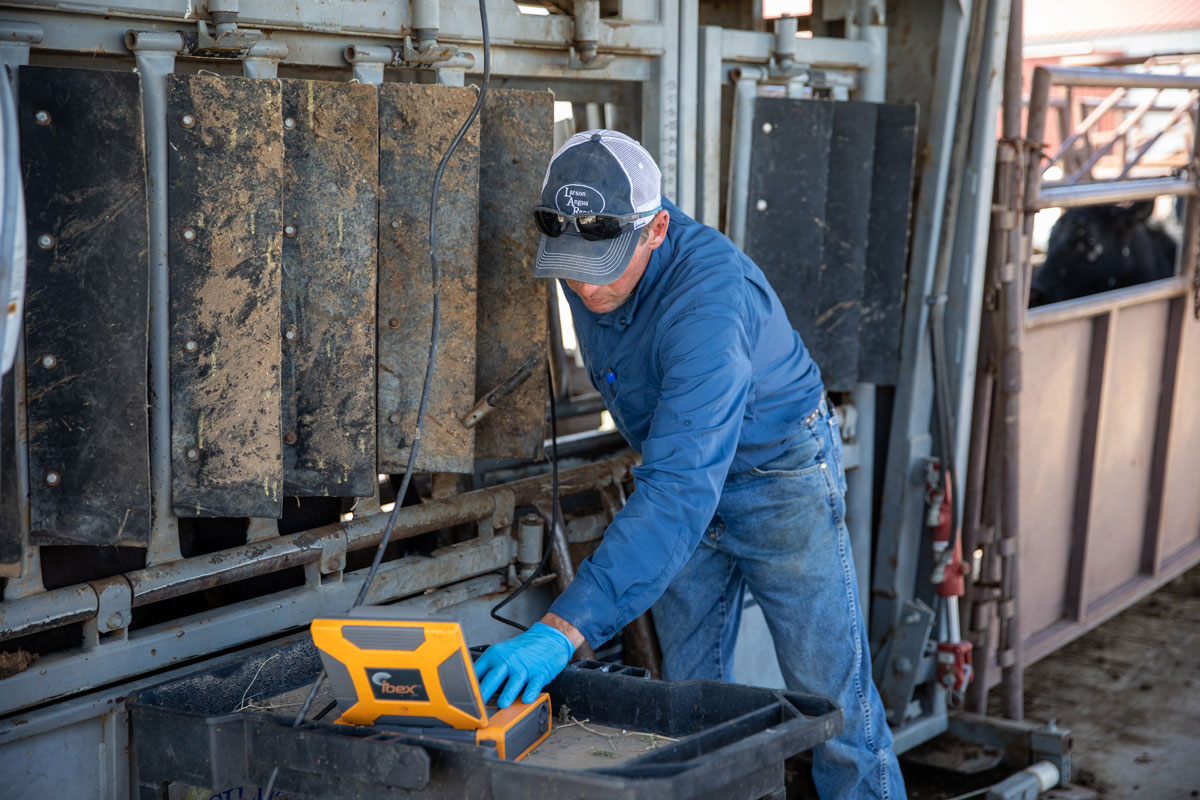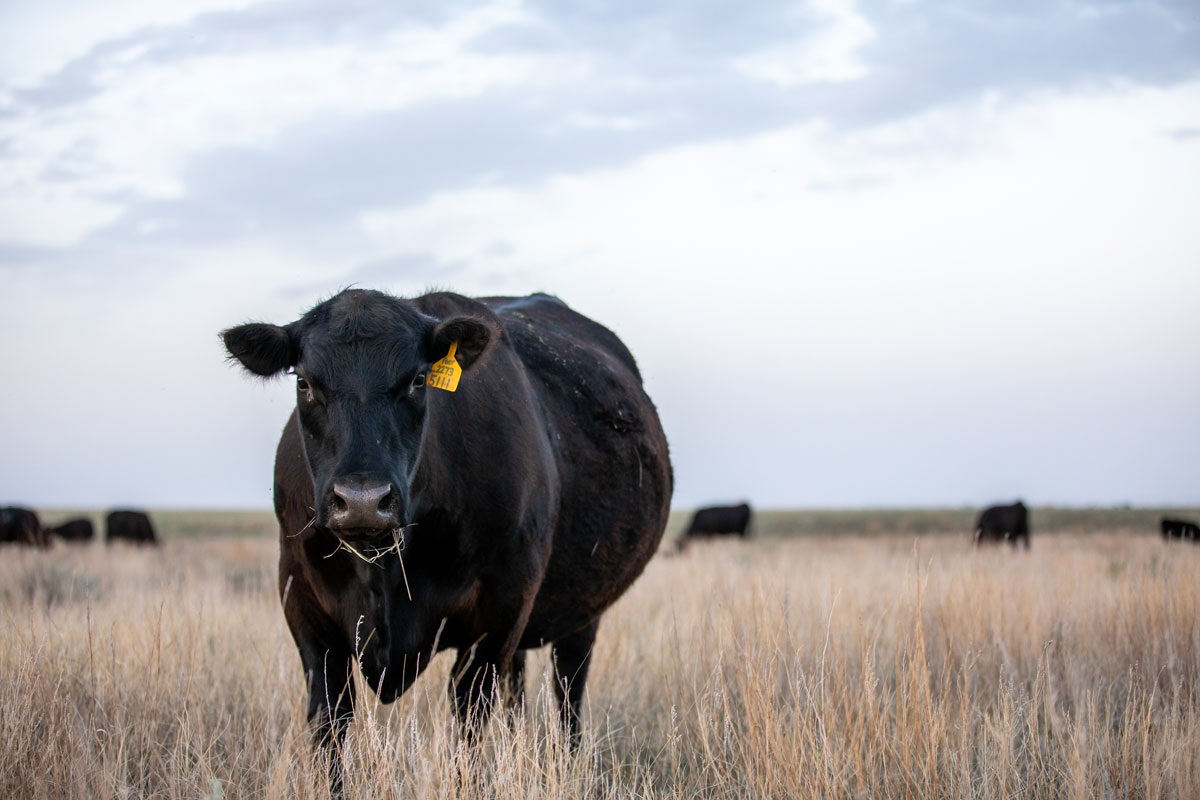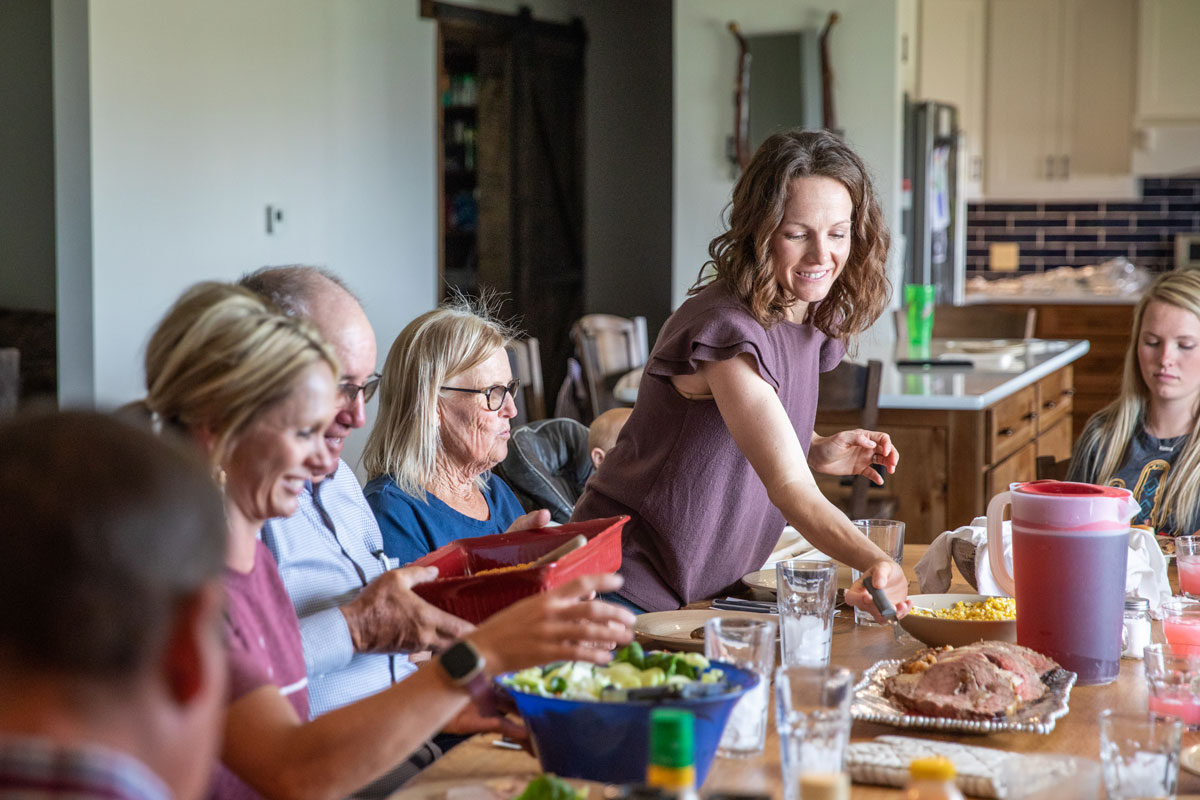
Following Second Dreams
Larson Angus Ranch recognized for the 2022 Seedstock Commitment to Excellence award.
By Morgan Boecker
Dust gathers on sketchbooks and drawing pencils while other plans take shape. Years ago, Brady Larson set aside his passion for art to master a new calling.
That echoes his dad’s stepping away from a dream of horse training to work on building the best Angus herd.
In 1977, Dan and wife Becky answered a more literal call when his own father, Floyd Larson, asked the couple to come back to Sharon Springs, Kansas. Dan took a pen riding job at nearby Kan-Sun Feeders and she drove a feed truck and worked with the processing crew.
The feedyard was a good place to start the horses they were raising, and Dan soon started feeding cattle there as he worked on up to assistant manager and became more involved after hours at home working for his father and leasing cows and farm ground. But he wasn’t sure this was meant to be. Though he grew up in the cattle business, his younger self didn’t think it would be a career.
Sometimes walking away takes you exactly where you need to be.
Economics and a newfound passion led him back to the family ranch, where he jumped into studying genetics and the Angus Journal. They’ve since grown Larson Angus Ranch to 800 cows. Since 2007, that’s been with the help of their son Brady along with his wife Kyla, bringing up a fifth generation on the land.
Cow work, genetic improvements and breeding plans are on the table for hours because building the perfect cow takes constant adjustments to the plans they lay out. The Larsons are working on a masterpiece that moves their families and customers closer to “best” every day.
Their determined journey toward elusive perfection helped Larson Angus Ranch earn the Certified Angus Beef (CAB) 2022 Seedstock Commitment to Excellence award.
Power of the Cow
Fields of corn, wheat, alfalfa and milo spread across the landscape, till Ladder Creek marks a shift, where black cows dot the rough, rocky terrain.
“We’re turning grass pastures that can’t be farmed into a high-quality protein source,” Dan says. “We can count on our Angus cows in this region. They work hard for us for 10 or 12 years and produce calves that have a lot of vigor.”
Investing in the right foundational pieces takes upcycling in the short-grass prairie where grazing is good in the summer. That’s if there’s enough rain to make it grow. Drought is part of the cycle and they’re accustomed to managing through them. The cold winter months they rely on cornstalks from neighboring farms.
“We take care of the land and the cattle, in turn, it takes care of us,” Kyla says. “That’s a very short answer for everything that goes into it.”
What works are medium-frame cows with moderate milk production, good udders, calving ease and sound feet to travel. Fertility and carcass merit are non-negotiable.
“It’s one of those things that you just constantly build on,” Brady says. “You’re never gonna get the perfect animal, but you just keep building on it and build on it and build on it.”
Just like each brush stroke adds detail to a painting, every bull mating brings them closer to their goals.
They quickly adopted artificial insemination (AI) in 1989 and within a few years started using embryo transfer (ET). That inspired Brady to pick up custom AI through ABS Global to keep him even busier during breeding season.
Today, they put in 150 embryos and give cows one chance with timed AI. Whatever doesn’t stick gets another chance with the turnout bull.
“We don’t do it on a huge scale compared to other people,” Dan says, while noting their ET work contributes to most of the 100 bulls they sell each March. “This really helps us speed up genetic progress.”
Cows must prove themselves before trusting them to produce an embryo, but they’re seeing that in younger cows all the time.
Technology takes out most of the guesswork. Ninety days after breeding, Brady ultrasounds the cows to match pregnancies to the breeding method and due date. From there, cows are split into calving groups and electronic identification lets them track the data and sort it in spreadsheets.
“We can better manage them, especially in the wintertime,” Brady says. “When we start calving and a blizzard hits and we need to bring some back to the barn, we know almost exactly when cows are going to calve.”
There’s no room for abstract; every little detail matters in the final picture.

Technology helps them stay on target. They use EId tags to track data on all of their cows, which they’re able to then use throughout the year to manage cows individually.
“I certainly think you can have both, maternal instinct and carcass merit,” Brady Larson says. “It’s not easy. I don’t know if the best animal will ever exist, but we strive every day to reach that.”

Customer Focused
Whether it’s in a pasture or on a plate, the family wants everything their customers want.
“Our customer base is not just selling calves at weaning, though some of them do,” Brady says. “We’ve got a lot of customers that come to us because they want to put their cattle on a grid and make extra money.”
The Larsons have the same priorities. Only the top bulls make the annual sale and the best heifers become replacements while they finish the other 600 in their own feedyard to market through US Premium Beef.
“Our goal was to get 100% Choice and years ago we got to that,” Dan says. “And then we tried for 100% CAB and we reached that goal. Now we’re feeding groups of cattle that grade nearly 80% Prime and dress at 64%.”
“If there was a quality grade above Prime, we’d try to target it,” Brady says. “But we also think there’s a multitude of traits we need to focus on to make a complete, balanced animal.”
Hitting the mark means the cattle have to excel across all EPDs and look good do it, he adds. Seven of their top-selling bulls ranked in the top 3% for $C (Combined Value), which combines $M (Maternal Weaned Calf Value) and $B (Beef Value). This helps them and their customers intending to keep replacement heifers and retain ownership through the feedyard.
Sitting at 4,000 feet of elevation, high altitude disease becomes a concern and pulmonary arterial pressure (PAP) a critical trait to watch. They see it affecting the youngest calves on feed.
“We feel we need to select more for this or get a little more frame on our calves before they go on feed,” Dan says. “Right now, the best tool we have at this stage is the PAP EPD.”
It’s a balancing act to dance among the relevant traits.
“When we’re really exceptional in one area, then we back up and try to self-audit and see where we really need to improve,” Brady says. “Is it fertility? Is it PAP? Foot quality? Udder quality? Is it growth and calving ease? But we try to really look at where we can be better.”
It’s a progressive mindset, seeking traits that ensure quality and carcass merit are expressed to their full potential. The quest goes on because that’s what pays.
“I was talking to a corn farmer and he told me how envious he was of us being able to add value to our product and that he did not have that ability or any extra way he could to add value,” Brady says. “And that kind of gave me the perspective: a brand, Certified Angus Beef, came out early and it’s been the most consistent product out there. And it’s a product that pays us back good premiums.”
Their sights are set on 100% Prime. Together, they’ll reach it.



Home is With Family
Seven miles is all it takes for Becky and Dan to be at any of their sons’ homes. Farming opportunities made it possible for Beau, Bret and Bart to return, supporting the ranch with the grains they grow and helping when they’re available.
“I don’t know what more a mother or grandmother could ask for,” Becky says. Most days the grandkids saddle up and take barrel racing lessons from Becky or even help move cows. At the end of the day, garage gatherings are common dinner stops.
“I would say this is the American dream. Not a lot of people get to make their livelihood doing what they love,” Brady says.
He and Kyla hope to pass that on to their four kids. Sustaining and improving the water, grass and cattle so each day is the best it can be. That means they’re always getting better.
Whether riding along in the Ranger to check cows, water or put out minerals, the kids are learning by example.
“We try to prioritize, and we don’t always get it right,” Kyla says. “But just getting up the next day and trying again, it’s a lot of hours. I think you could work and work and work and never get it done. But for us, it’s doing the best for our family. Get the cows taken care of, get the work done.”
So they’ll keep working to meet this second dream, skillfully adding brush strokes to make it better.
This story was originally published in the Angus Journal.
You May Also Like…
$100,000 Up for Grabs with 2024 Colvin Scholarships
Certified Angus Beef is offering $100,000 in scholarships for agricultural college students through the 2024 Colvin Scholarship Fund. Aspiring students passionate about agriculture and innovation, who live in the U.S. or Canada, are encouraged to apply before the April 30 deadline. With the Colvin Scholarship Fund honoring Louis M. “Mick” Colvin’s legacy, Certified Angus Beef continues its commitment to cultivating future leaders in the beef industry.
Carcass Quality Set to Climb Seasonally
With the arrival of the new year the beef market will rapidly adjust to changes in consumer buying habits. This will remove demand pressure from ribs and tenderloins, realigning the contribution of these most valuable beef cuts to a smaller percentage of carcass value
Raised with Respect™ Cattle Care Campaign Launched This Fall
Raised with Respect™ was developed as part of a strategic cattle care partnership between Sysco and CAB. The collaboration focuses on supporting farmers and ranchers, equipping them with continuing education to stay current on best management practices and helping to increase consumer confidence in beef production.



